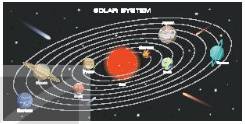Read the following passage and mark the letter A, B, C, or D on your answer sheet to indicate the word or phrase that best fits each of the numbered blanks. The Planets of Jupiter The largest of the giant gas planets, Jupiter, with a volume 1,300 times greater than Earth’s, contains more than twice the mass of all the other planets combined. It is thought to be a gaseous and fluid planet without solid surfaces, Had it been somewhat more massive, Jupiter might have attained internal...
Đọc tiếp
Read the following passage and mark the letter A, B, C, or D on your answer sheet to indicate the word or phrase that best fits each of the numbered blanks.
The Planets of Jupiter
The largest of the giant gas planets, Jupiter, with a volume 1,300 times greater than Earth’s, contains more than twice the mass of all the other planets combined. It is thought to be a gaseous and fluid planet without solid surfaces, Had it been somewhat more massive, Jupiter might have attained internal temperatures as high as the ignition point for nuclear reactions, and it would have flamed as a star in its own right. Jupiter and the other giant planets are of a low-density type quite distinct from the terrestrial planets: they are composed predominantly of such substances as hydrogen, helium, ammonia, and methane, unlike terrestrial planets. Much of Jupiter’s interior might be in the form of liquid, metallic hydrogen, Normally, hydrogen is a gas, but under pressures of millions of kilograms per square centimeter, which exist in the deep interior of Jupiter, the hydrogen atoms might lock together to form a liquid with the properties of a metal. Some scientists believe that the innermost core of Jupiter might be rocky, or metallic like the core of Earth.
Jupiter rotates very fast, once every 9.8 hours. As a result, its clouds, which are composed largely of frozen and liquid ammonia, have been whipped into alternating dark and bright bands that circle the planet at different speeds in different latitudes. Jupiter’s puzzling Great Red Spot changes size as it hovers in the Southern Hemisphere. Scientists speculate it might be a gigantic hurricane, which because of its large size (the Earth could easily fit inside it), lasts for hundreds of years.
Jupiter gives off twice as much heat as it receives from the Sun. Perhaps this is primeval heat or beat generated by the continued gravitational contraction of the planet. Another star like characteristic of Jupiter is its sixteen natural satellites, which, like a miniature model of the Solar System, decrease in density with distance from rocky moons close to Jupiter to icy moons farther away. If Jupiter were about 70 times more massive, it would have become a star, Jupiter is the best-preserved sample of the early solar nebula, and with its satellites, might contain the most important clues about the origin of the Solar System.
According to the passage, some scientists believe Jupiter and Earth are similar in that they both have__________.
A. solid surfaces
B. similar masses
C. similar atmospheres
D. metallic cores

